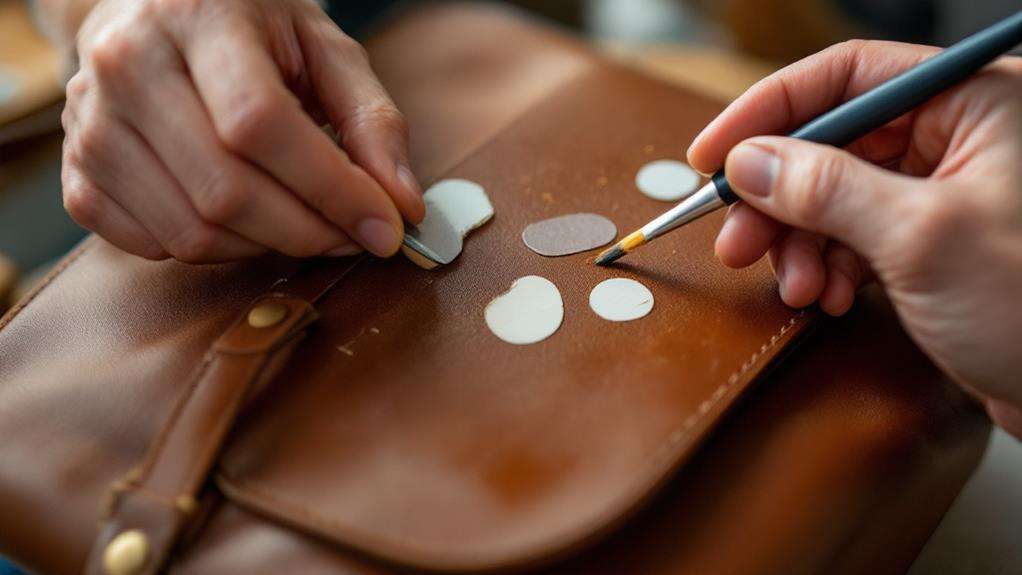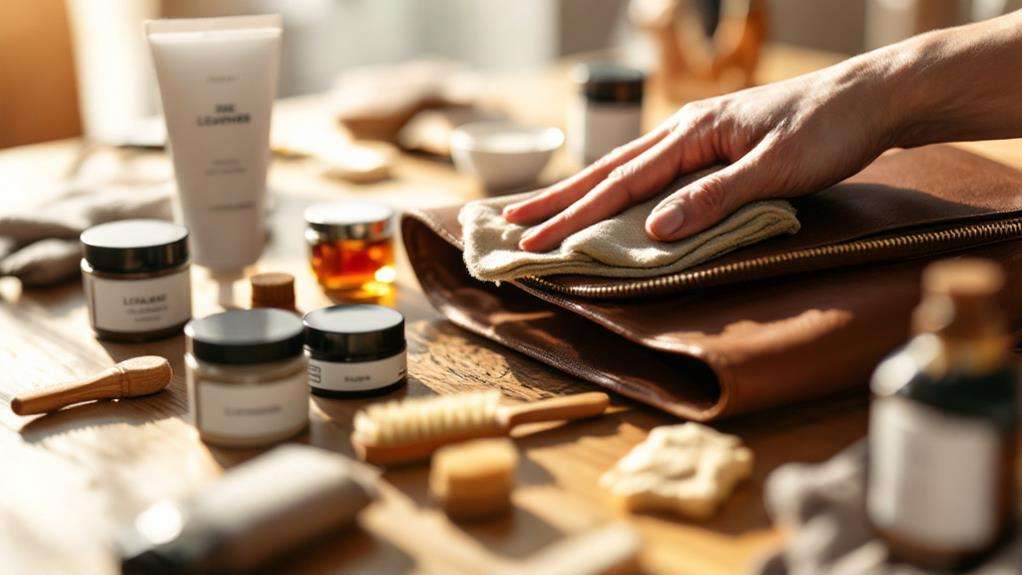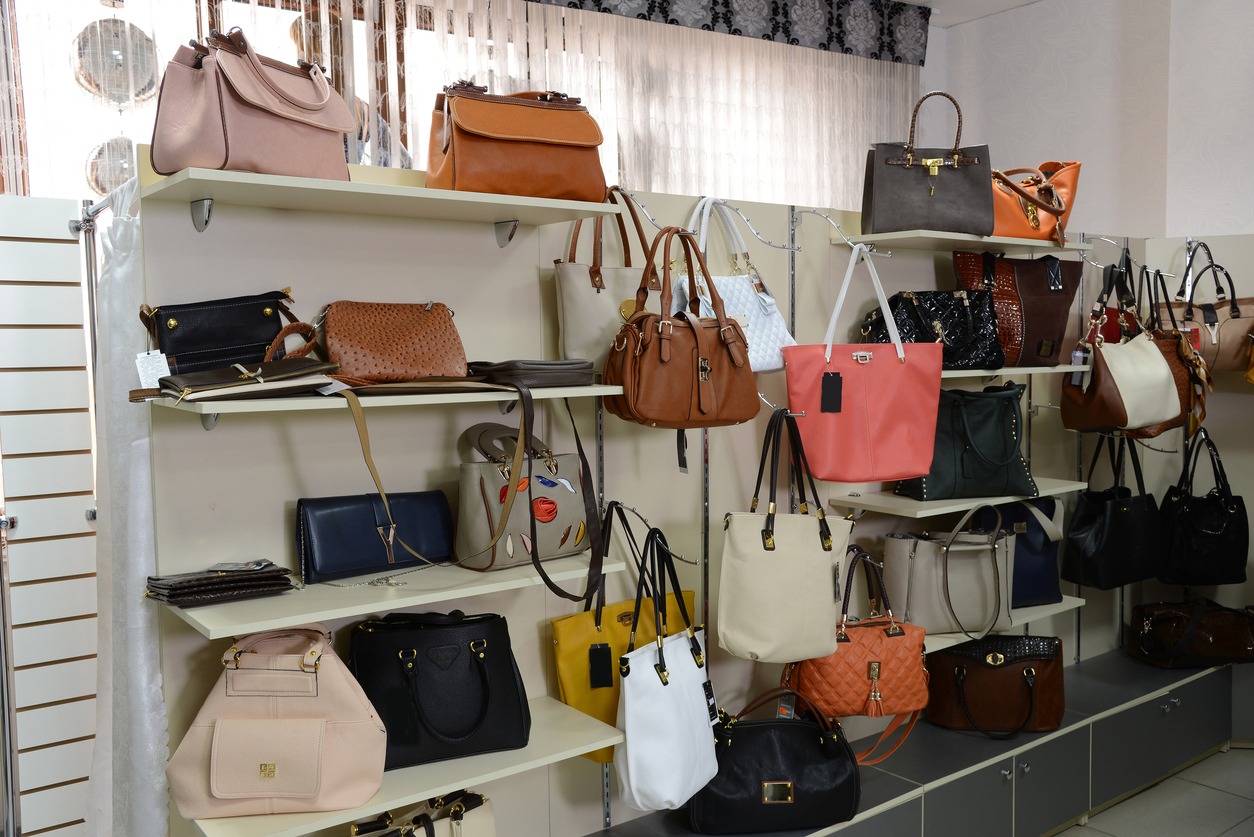How to Repair Scratched Leather Handbag

To repair a scratched leather handbag, start by evaluating the scratch's severity. Minor scratches can be managed with household methods, while deeper ones might need a leather repair kit. Clean the area with a dry microfiber cloth, and if needed, use rubbing alcohol for oils. Apply a leather cleaner gently in circular motions. For deeper scratches, use a leather repair kit with fillers and color-matching compounds. Finish with a conditioner to restore moisture and suppleness. Remember, regular conditioning and careful storage can prevent future damage. Investigate how these methods keep your handbag in pristine condition.
Assessing Scratch Severity
When you initially notice a scratch on your leather handbag, it is essential to assess the severity to determine the best course of action. Start by closely examining your scratched leather bag to differentiate between minor scratches and deeper scratches. Minor scratches generally affect only the surface, making them easier to manage. You might just need a simple household method, like a leather cleaning conditioner or cream, to help remove them. Gently buff the area to see if the mark fades, indicating a superficial scratch.
For deeper scratches, which penetrate further into the leather, you'll need a more focused approach. These scratches disrupt the leather's texture and may require leather repair kits designed for such damages. These kits often contain tools and solutions that can restore the leather's integrity more effectively than household methods.
The quality of the leather plays a significant role in scratch visibility and repairability. High-quality leather, such as full-grain, tends to be more resilient and may conceal scratches better than lower-quality materials. Timely assessment and intervention are vital to prevent deeper scratches from causing permanent damage, ensuring your handbag remains in excellent condition.
Cleaning the Damaged Area
Proper preparation is key before starting any repair on your leather handbag. Begin by gently using a dry microfiber cloth to remove surface dirt or debris from the leather. This guarantees you don't press particles into the scratches, causing further damage. Next, dampen a cotton swab or cotton ball with rubbing alcohol and carefully dab the affected area. This step removes oils and residues that might interfere with repair products later on.
For a deeper clean, apply a dedicated leather cleaner with a microfiber cloth. Use circular motions to avoid vigorous rubbing, which could worsen the scratches. Remember, it's essential to test any cleaning product on an inconspicuous area of the handbag initially. This precaution guarantees the cleaner won't discolor or damage the leather further.
Once the affected area is clean, make sure the leather is thoroughly dried. Excess moisture can lead to mold or further degradation. After drying, consider applying a leather conditioner to restore moisture and flexibility, helping to maintain the handbag's appearance. By taking these steps, you'll have a clean slate to work with, setting the stage for effective repairs.
Using Leather Repair Kits

To tackle scratches on your leather handbag, consider using a leather repair kit. These kits are your best bet for addressing scuffs and scratches on genuine leather. Start by cleaning the scratched area with rubbing alcohol. This step guarantees any dirt or oils are removed, allowing the repair materials to adhere better. Once cleaned, you'll find that leather repair kits come equipped with everything you need, including color-matching compounds, fillers, and application tools, all designed to restore your handbag's finish.
After cleaning, apply a small amount of the filler provided in the kit to the scratched area. Carefully smooth it out using the tools included, and refer to the detailed instructions for guidance. The color-matching compounds are essential; they help blend the repair seamlessly with the rest of your leather, making sure your bag looks as good as new. Many kits offer a variety of color options, so you can match your handbag's unique shade.
Regular use of these kits not only repairs damage but also helps maintain the appearance and longevity of your handbag. By addressing scratches promptly, you keep your leather looking pristine and prevent further deterioration.
Applying Leather Conditioner
After repairing scratches with a leather repair kit, maintaining your handbag's condition is essential to its longevity. Start by cleaning the scratched area with a dedicated leather cleaner. Use a soft cloth to clean, guaranteeing you remove all dirt and oils that might inhibit the effectiveness of the conditioner. Leather care is important for preserving its appearance, so be thorough in this initial step.
Once cleaned, you'll apply the leather conditioner. Choose a high-quality product containing natural oils, as these not only hydrate but also improve the leather's suppleness. Using a clean, soft microfiber cloth, apply the conditioner in circular motions. This technique guarantees even coverage and proper absorption into the leather. Pay special attention to the previously scratched areas, as they may require extra nourishment to fully restore their appearance.
After applying the leather conditioner, allow the handbag to air dry completely. This drying process is essential as it locks in moisture, restoring the leather's original texture and appearance. By using leather conditioner regularly every 3-6 months, you maintain the moisture balance in your leather handbags, prevent dryness, and reduce the visibility of any scratches that may occur.
Preventative Maintenance Tips

In relation to caring for your leather handbag, regular preventative maintenance guarantees it remains in top condition for years. Start by applying leather conditioner every 3-6 months to maintain the moisture balance, which improves the leather's scratch resistance. For storage, always place your Leather Bags in protective dust bags to prevent abrasions and exposure to harmful environmental factors. This simple habit can greatly reduce the risk of wear and tear over time.
Avoid placing your bag on rough surfaces and be mindful of sharp objects that might cause damage. If you do notice a scratch is still visible after conditioning, try using a cotton swab with a bit of shoe polish that matches the type of leather. This trick can help to lessen the appearance of minor scratches. Furthermore, consider using leather protectants; they create a barrier against scratches and minor scuffs, prolonging your handbag's pristine appearance.
Lastly, conduct routine inspections of your leather goods. Identifying potential issues early allows for timely maintenance and repair, preserving your investment. By incorporating these preventative maintenance tips, you'll make sure your leather handbag remains beautiful and functional for years to come.




